Digital Posters
Imaging of Heart Failure: Structure & Function
ISMRM & SMRT Annual Meeting • 15-20 May 2021

| Concurrent 3 | 13:00 - 14:00 |
0959.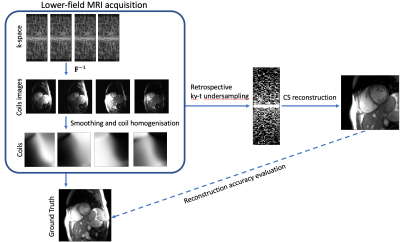 |
Highly Accelerated Cardiac Cine Imaging on a Lower-Field 0.75T MRI
Valery Vishnevskiy1, Christian Guenthner1, Charles McGrath1, and Sebastian Kozerke1
1University and ETH Zurich, Zurich, Switzerland
We investigated the feasibility of accelerating cardiac cine imaging on a 0.75T lower-field MRI system by performing retrospective k-t undersampling of cine data at acceleration factors of 3 to 10. Reconstructed images show no unexpected artefacts with nRMSE of 0.6% at 7-fold acceleration. Additionally, the magnetohydrodynamic effect (MHD) in the electrocardiogram was significantly reduced at 0.75T compared to 1.5T promising rapid and robust cine imaging at lower field.
|
|||
 |
0960.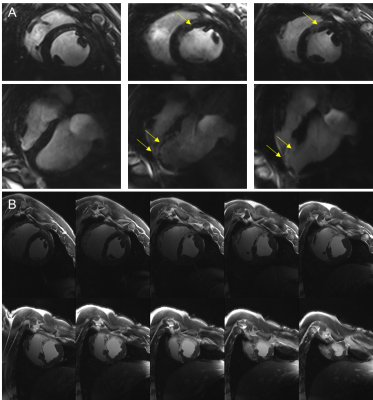 |
Ultrahigh Field Cardiac MRI in a Large Animal Model of Acute and Chronic Infarction
David Lohr1, Maya Bille1, Maxim Terekhov1, Michael Hock1, Ibrahim Elabyad1, Steffen Baltes1, Alena Kollmann1, Theresa Reiter1,2, Florian Schnitter2, Wolfgang Rudolf Bauer1,2, Ulrich Hofmann2, and Laura Maria Schreiber1
1Chair of Molecular and Cellular Imaging, Comprehensive Heart Failure Center (CHFC), University Hospital Würzburg, Würzburg, Germany, 2Department of Internal Medicine I, University Hospital Würzburg, Würzburg, Germany Ultrahigh field cardiac MRI in a large animal model with acute and chronic infarction is feasible and enables high resolution functional imaging with 4- to 16-fold higher in-plane resolution compared to clinical systems. Blood-tissue contrast enabled clear identification of tissue boundaries, papillary muscle and the valves. Apical slices were akinetic. Mean values for ejection fraction [%] at baseline and 3-4, 10-14, and 60 days post MI were: 66±5, 45±7, 49±10, 50±5, respectively. Coefficients of variation for intra- and inter-observer variability in ejection fraction were 1.5% and 6.2%. T2*-weighted images and LGE enabled visualization of the infarct area. |
||
0961.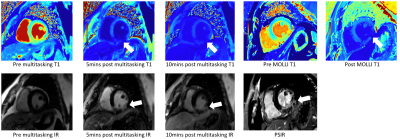 |
2D Cardiac MR T1 Cine Multitasking: Initial Clinical Experience
Lu Huang1, Qi Liu2, Jingyuan Lyu2, Zhongqi Zhang3, Yanqun Teng3, Shuheng Zhang3, Jian Xu2, Weiguo Zhang2, and Liming Xia1
1Department of Radiology, Tongji Hospital, Tongji Medical College, Huazhong University of Science and Technology, Wuhan, China, 2UIH America, Inc., Houston, TX, United States, 3United Imaging Healthcare, Shanghai, China
Here we report our initial clinical experience using a prototype 2D cardiac MR T1 cine multitasking technique with inline reconstruction on a clinical scanner without breath-hold and ECG triggering. Its results were compared with routine clinical cardiac MR techniques in assessing lesions in a patient group.
|
|||
0962.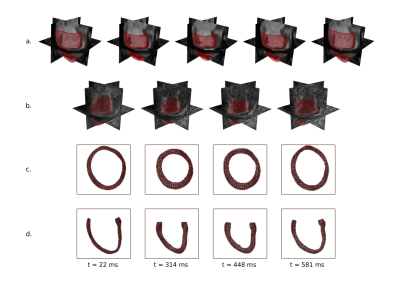 |
Quantification of Left Ventricular Strain by Joint Analysis of 3D Tagging and Cine MR Images
Ezgi Berberoglu1, Christian Stoeck1, Sebastian Kozerke1, and Martin Genet2
1Institute for Biomedical Engineering, University and ETH Zurich, Zürich, Switzerland, 2Solid Mechanics Laboratory, École Polytechnique, Palaiseau, France
Prognostic value of deformation metrics extracted from cine MR images has been shown by numerous studies in the clinical setting, but with some limitations to detect local changes in the myocardium. Tagged CMR, however, allows tracking material points on the heart wall, revealing local myocardial deformation. Although it is superior to cine MRI in quantification of myocardial torsion, radial strain is often omitted. In this contribution, we enrich our registration technique with the capability to combine cine and tagged in-vivo CMR images, improving accuracy of regional strain assessment from tagged images while acquiring global deformation from cine CMR images.
|
|||
0963.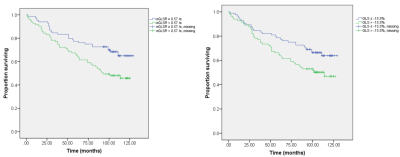 |
Feature tracking derived global early diastolic longitudinal strain rate in risk stratification of HFpEF:A preliminary prognostic study
Jian He1, Gang Yin1, Weichun Wu2, and Minjie Lu1
1Department of Magnetic Resonance Imaging, Fuwai Hospital & Cardiovascular Institute, Chinese Academy of Medical Sciences & Tsinghua University, Peking Union Medical College, National Center for Cardiovascular Diseases, beijing, China, 2Department of Ultrasound, Fuwai Hospital & Cardiovascular Institute, Chinese Academy of Medical Sciences & Tsinghua University, Peking Union Medical College, National Center for Cardiovascular Diseases, beijing, China
In this retrospective study, 167 HFpEF patients (median age 60 years, 40% women) were included. At a median follow-up of 110 (IQR 104–120) months, 71 patients experienced the primary composite outcome of all-cause death and HF hospitalization. Impaired global early diastolic longitudinal strain rate (eGLSR), defined as an eGLSR < median, 0.57/s, was present in 49.7% of patients and was predictive of the composite outcome (adjusted HR 2.57, 95% CI 1.58–4.45; p=0.001), and HF hospitalization alone (adjusted HR 2.48, 95% CI 1.31–4.70; p=0.005) after adjusting for clinical and conventional imaging variables.
|
|||
0964.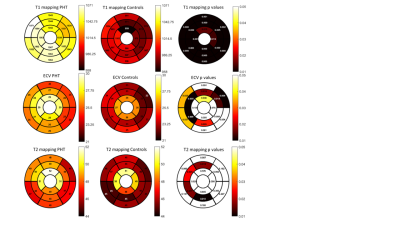 |
Comprehensive Cardiac MRI Demonstrates Altered Myocardial Tissue and Function in Pediatric Heart Transplant Recipients
Nazia Husain1, Michael Markl2, Kae Watanabe3, Cynthia Rigsby3, and Joshua D Robinson3
1Pediatric Cardiology, Ann & Robert H Lurie Children's Hospital of Chicago, Chicago, IL, United States, 2Northwestern University, Chicago, IL, United States, 3Ann & Robert H Lurie Children's Hospital of Chicago, Chicago, IL, United States
Current gold standard for surveillance of pediatric heart transplant (PHT) complications is invasive and imperfect. CMR allows non-invasive evaluation of myocardial structure and function. A retrospective review of 26 PHT who underwent regadenoson stress perfusion CMR with tissue characterization and 18 age-matched controls was performed. Global T1 and ECV were higher in PHT; as were biventricular volumes and cardiac output. Myocardial perfusion reserve index was lower in PHT. Structure-function correlations between LVEF and strain versus T2 were noted. T1, ECV were associated with clinical rejection scores. CMR comprehensively evaluates myocardial alterations in PHT.
|
|||
0965.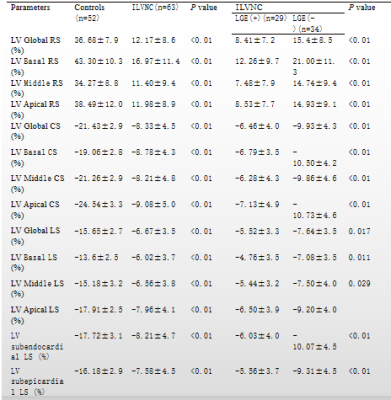 |
Evaluation of Isolated Left Ventricular Noncompaction Using Cardiac Magnetic Resonance Tissue Tracking in Strains
Jiamin Zhang1, Mengchun Jiang1, Mu Zeng1, and Xiaoyue Zhou2
1Department of Radiology, The Second Xiangya Hospital, Central South University, Changsha, China, 2MR Collaboration, Siemens Healthineers Ltd, Shanghai, China
We used tissue tracking cardiac magnetic resonance (TT-CMR) to quantitatively analyze the global, regional, and layer-specific strain of isolated left ventricular noncompaction (ILVNC). Combined with late gadolinium enhancement (LGE), we initially explored the effect of focal myocardial fibrosis on myocardial strain
|
|||
0966. |
Prognostic Value of Global Circumferential Strain in Patients with Severe Dilated Cardiomyopathy
Shenglei Shu1, Jing Wang1, and Xiaoyue Zhou2
1Department of Radiology, Union Hospital, Tongji Medical College, Huazhong University of Science and Technology, Wuhan, China, 2MR Collaboration, Siemens Healthineers Ltd., Shanghai, China
The prognostic value of strain parameters from cardiac magnetic resonance (CMR) cine images has been rarely studied in patients with severe dilated cardiomyopathy (DCM). In this study, we retrospectively identified 129 patients with severe DCM who underwent CMR. Strain and conventional CMR parameters were acquired from baseline CMR. The prognostic value of CMR parameters and clinical data for predicting adverse events was analyzed using Cox regression analyses. Global circumferential strain (GCS) was independently associated with adverse events after adjusting for clinical and imaging risk factors. GCS from CMR feature-tracking could be useful for risk stratification in patients with severe DCM.
|
|||
0967.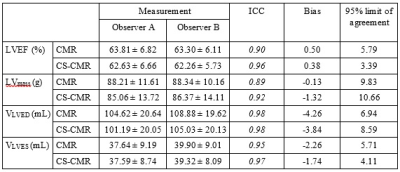 |
Inter-observer and intra-observer agreement on the MRI-based left-ventricular contractility using compress-sensing accelerated cardiac MRI
Chi Wai Michael Liu1, Gladys LO GOH1, Cindy Xue2, Raymond Lee1, Wai Kit Chung1, Ka Man Cura Chan1, Kwai Sin Frederick Kong1, Po Lung Polo Chan1, Wing Wa Li1, Chun Ta Yuen1, and Johnny Tang1
1Department of Diagnostic and Interventional Radiology, HKSH Eastern Medical Centre, Hong Kong, Hong Kong, 2HKSH Eastern Medical Centre, Hong Kong, Hong Kong
The reliability of the left-ventricular ejection function estimated from the compress-sensing accelerated cardiac MR scan was evaluated in the study. Excellent inter-observer and intra-observer agreement were observed based on the data from the compress-sensing cardiac MR scans, suggesting the usefulness of compress-sensing acceleration in improving the patient comfort and scan time reduction without degrading the reliability in the cardiac output assessment.
|
|||
0968.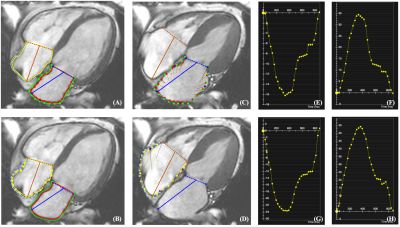 |
Quantitative assessment of left and right atrial strains using cardiovascular magnetic resonance based tissue tracking
Yang-yang Qu1,2, Dominik Buckert1, and Volker Rasche1
1Internal Medicine II, Ulm University, Ulm, Germany, 2Department of Cardiology, Zhongda Hospital, School of Medicine, Southeast University, Nanjing, China
To better understand the mechanics of left and right atrium, radial and longitudinal strains of atrial free wall was quantified using cardiovascular magnetic resonance based tissue tracking (CMR-TT) technique. Gender- and age-specific reference values were generated among a healthy population (n=150). Larger magnitudes of strains were noticed in females and the younger. CMR-TT has been proven as a feasible and reproducible technique in this study, and the gender- and age-specific references need to be established for the clinical practice.
|
|||
0969.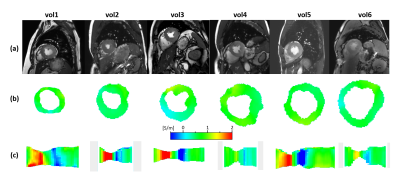 |
Mapping electric bulk conductivity in the human heart
Ulrich Katscher1 and Steffen Weiss1
1Philips Research Europe, Hamburg, Germany
In addition to electro-physiological examinations, mapping the passive bulk conductivity would complete a comprehensive characterization of myocardial tissue. The technique to measure this conductivity with MRI, called “Electrical Properties Tomography” (EPT), has been developed some time ago, but not yet explored for the human heart. This study investigated and confirmed two basal goals of cardiac EPT: (a) that cardiac EPT is technically feasible, (b) that quantitative conductivity values of myocardium and blood, obtained from a small group of volunteers, are in line with expectations from literature.
|
|||
0970.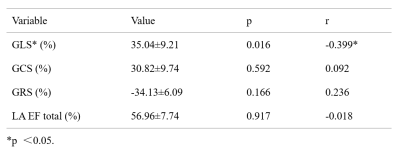 |
Myocardial Strain in Left Atrium in Smoking Population with Magnetic Resonance Imaging: A Pilot Study
Di Tian1, Shuangchun Ma1, Ziqi Xiong1, Xin Li1, Qingwei Song1, Ailian Liu1, and Zhiyong Li1
1The First Affiliated Hospital of Dalian Medical University, Dalian, China, Dalian, China
The purpose of this study is to explore the correlation between smokers' left atrium (LA) myocardial strain (MS), total ejection fraction (EFtotal) parameters and smoking parameters. This study demonstrated that LA global longitudinal strain (GLS) was significantly impaired and reduced with prolonged duration of smoking, smoking intensity and smoking burden.
|
|||
0971. |
Cardiac mechanical performance of ALL survivors assessed by combined CMR and Incremental exercise test.
Delphine Perie-Curnier1, Egidie Uwase1, Maxime Caru1, Maxence Abasq1, and Daniel Curnier2
1Mechanical Engineering, Polytechnique Montreal, Montreal, QC, Canada, 2Kinesiology, Université de Montréal, Montreal, QC, Canada
Despite the late development of cardiac dysfunction in childhood acute lymphoblastic leukemia survivors, early detection of doxorubicin-related cardiotoxicity remains a challenge to better stratify these survivors who need a close follow-up. Cine-CMR acquisitions, combined to cardiopulmonary exercise testing and CircAdapt simulations showed that survivors’ exposition to doxorubicin, whatever the cumulative dose received, affected the cardiac efficiency and the ventricular-arterial coupling at rest and for light cardiac stress. Moreover, dexrazoxane treatments helped survivors to better adapt to high cardiac stress while presenting no differences at rest and for light cardiac stress.
|
|||
0972. |
Application of cardiac magnetic resonance strain analysis in arrhythmogenic right ventricular cardiomyopathy
Xuan Li1, Jiang Wu1, Chaohui Yang1, Lina Zhu1, Heng Niu1, Xiaoyong Hao1, and Kaiyu Wang2
1Shanxi Cardiovascular Hospital, Taiyuan, China, 2GE Healthcare, MR Research, Beijing, China
CMR-FT can quantitatively evaluate myocardial motion. In this study, we find that the right ventricular global longitudinal, radial and circumferential strain in ARVC patients are significantly lower than those in normal controls. In ARVC patients with LVEF < 55%, the left ventricular global longitudinal, radial and circumferential strain decrease significantly. The left ventricular global longitudinal strain also decrease in ARVC patients with LVEF ≥ 55%. These results suggested that myocardial strain can be used to evaluate biventricular myocardial motion in ARVC patients.
|
|||
0973.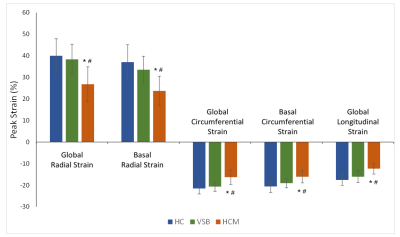 |
A preliminary study on myocardial strain evaluation of ventricular septal bulge and hypertrophic cardiomyopathy in the elderly
Jingwen Dai1, Min Zhang1, Jing An2, and Min Chen1
1Beijing Hospital, National Center of Gerontology, Beijing, China, 2Siemens Shenzhen Magnetic Resonance Ltd, Shenzhen, China
To investigate the differences in basal septal hypertrophy in elderly people between ventricular septal bulge(VSB) and hypertrophic cardiomyopathy(HCM) based on myocardial strain analysis, A total of 13 VSB subjects, 9 HCM patients, and 8 healthy controls underwent cardiac MR scan. The strain parameters shows significant differences between VSB and HCM, and no significant differences between VSB and healthy controls. These findings may suggest a different underlying pathological change and provide a potential diagnostic clue in distinguishing VSB and HCM in elderly people.
|
|||
0974.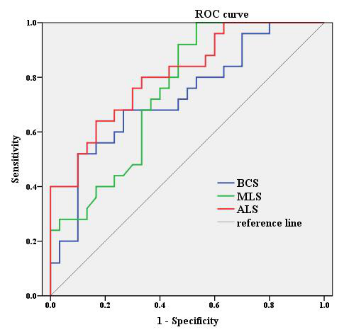 |
The value of CMR Feature Tracking in the differential diagnosis of isolated left ventricular noncompaction and dilated cardiomyopathy
Lina Zhu1, Jiang Wu1, Xiaoyong Hao1, Xuan Li1, Zhaohui Yang1, Heng Niu1, and Kaiyu Wang2
1Shanxi Cardiovascular Hospital, Taiyuan, China, 2GE Healthcare, MR Research, Beijing, China
In this study, myocardial strain parameters was used to distinguish Isolated left ventricular noncompaction (ILVNC) and dilated cardiomyopathy (DCM). The results showed that the apex longitudinal strain (LS) had great potential in the differential diagnosis of ILVNC and DCM, and different change patterns are presented in the LS of the myocardium from the basal segment to the apex.
|
|||
0975.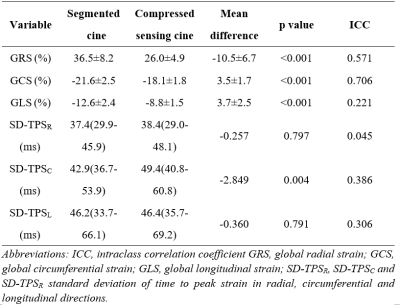 |
Single-shot Compressed Sensing Versus Segmented Cine Cardiac Magnetic Resonance to Assess Left Ventricular Volume and Strain
yang chen1, Wen Qian1, Xiao yue Zhou2, Yi Xu1, and Xiao mei Zhu1
1the First Affiliated Hospital of Nanjing Medical University, Nanjing, China, 2Siemens Healthineers Ltd, Shanghai, China
Although segmented cine cardiac magnetic resonance (CMR) is the standard choice for assessing left ventricular (LV) volume, single-shot compressed sensing (CS) cine CMR can provide similar information with shorter examination times. A total of 37 healthy patients underwent both single-shot CS and standard segmented cine imaging. The single-shot CS global strain and standard deviation of the time to peak strain were poorly to moderately correlated with those of the standard segmented cine. Inter- and intraobserver variability for LV strain were mostly good to excellent for both groups.
|
|||
0976.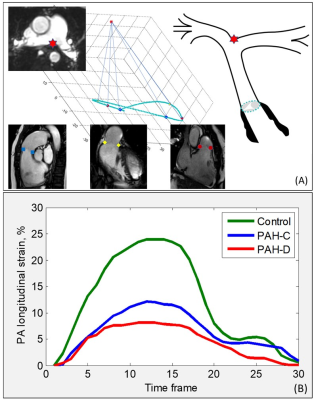 |
Impaired CMR-derived Pulmonary Artery Global Longitudinal Strain is Related to Decompensated Hemodynamics in Pulmonary Arterial Hypertension
Shuang Leng1, Ru-San Tan1,2, Ping Chai3,4, Wen Ruan1, Ting Ting Low3,4, Lynette Teo4,5, Tee Joo Yeo3,4, Xiaodan Zhao1, John C. Allen2, Jonathan Yap1, Soo Teik Lim1,2, James W. Yip3,4, Ju Le Tan1,2, and Liang Zhong1,2
1National Heart Centre Singapore, Singapore, Singapore, 2Duke-NUS Medical School, Singapore, Singapore, 3National University Heart Centre, Singapore, Singapore, 4Yong Loo Lin School of Medicine, National University of Singapore, Singapore, Singapore, 5National University Hospital, Singapore, Singapore
Pulmonary artery (PA) stiffness in pulmonary arterial hypertension (PAH) is strongly associated with clinical progression of the disease. This study aimed to introduce a novel parameter—PA global longitudinal strain (GLS)—for PA stiffness assessment using a semi-automated feature-tracking approach with standard cine cardiovascular magnetic resonance (CMR). Reduced PA GLS was significantly associated with increased pulmonary artery pressure and pulmonary vascular resistance in PAH. In addition, PA GLS was significantly impaired in PAH patients with hemodynamically decompensated right ventricular (RV) function compared to those with compensated RV function.
|
|||
0977.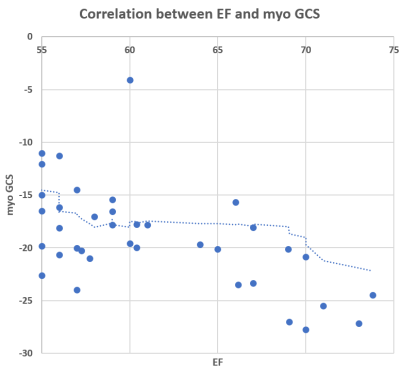 |
Left ventricular ejection fraction and global circumferential strain demonstrate non-linear relationship
Jadranka Stojanovska1 and El-Sayed H Ibrahim2
1University of Michigan, Ann Arbor, MI, United States, 2Medical College of Wisconsin, Milwaukee, WI, United States
Left ventricular (LV) dysfunction as identified by depressed systolic function is an independent predictors of mortality and hospitalization with ischemic cardiomyopathy. LV systolic function as defined by the ejection fraction (EF) is quantified using cardiac imaging. We hypothesize that subset of patients with ischemic cardiomyopathy and normal LV EF of 55% demonstrate impairment in cardiac contractility by strain imaging. The results showed that the nonlinear relationship between LVEF and myocardium global circumferential-strain is indicative that EF is not sensitive to regional cardiac dysfunction or LV remodeling. Cardiac strain should become the cornerstone of the evaluation of patients with ischemic cardiomyopathy.
|
|||
0978.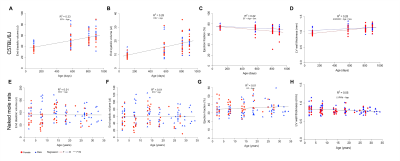 |
Assessment of cardiac aging in naked mole-rats and mice using ultrasound and MRI
Emine Can1, Megan Smith1, Rochelle Buffenstein1, and Johannes Riegler1
1Calico Life Sciences LLC, South San Francisco, CA, United States
Naked mole-rats are extremely long-lived (>38 years) small (35-60g) rodents that show no increased risk of dying as they get older, implying that organ function is well-maintained throughout life. Using cardiac MRI, ultrasound and large cohorts of both mice and mole-rats we undertook a comprehensive comparative analysis of age-related changes in cardiovascular function over their lifespans. Unlike mice that show declines in most measurements of cardiac function and increased left ventricle wall thickness with age, we found naked mole-rats maintain cardiac function and functional cardiac reserve capacity well into their fourth decade of life.
|
The International Society for Magnetic Resonance in Medicine is accredited by the Accreditation Council for Continuing Medical Education to provide continuing medical education for physicians.